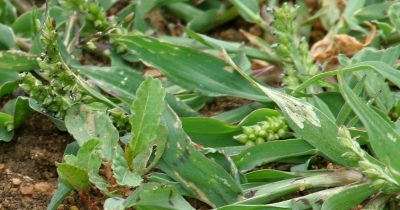
Agriculture in China plays a crucial role in feeding one of the world’s largest populations, and with such expansive crop production, weed infestation is a major challenge that affects yield, quality, and farm profitability. Identifying the common weeds found in China, along with understanding their botanical names, is essential for developing strategic and scientific weed control methods. This blog outlines the top agricultural weeds in China, their effects, and how to manage them for better farm outcomes.
Common Weeds Found in China and Their Botanical Names
Table of Contents
- Introduction
- Meaning and Impact of Weeds in Chinese Agriculture
- Common Weeds Found in China (With Botanical Names)
- Characteristics of Common Agricultural Weeds
- Problems Caused by Weeds in China
- Weed Management Practices Used in China
- Conclusion
- Revision Questions and Answers
Meaning and Impact of Weeds in Chinese Agriculture
Weeds are unwanted plants that grow among crops and compete for sunlight, water, and nutrients. In China, where rice, wheat, corn, and vegetables dominate, weed species can reduce crop productivity by over 30% if left uncontrolled. These plants not only affect yield but also increase the cost of cultivation and harbor pests and diseases.
Common Weeds Found in China (With Botanical Names)
Below is a table of common agricultural weeds in China along with their botanical names and primary crops they affect:
| Common Name | Botanical Name | Crops Commonly Affected |
|---|---|---|
| Barnyard grass | Echinochloa crus-galli | Rice, maize, vegetables |
| Goosegrass | Eleusine indica | Vegetables, maize, sugarcane |
| Nutgrass / Purple nutsedge | Cyperus rotundus | Rice, vegetables, fruits |
| Annual bluegrass | Poa annua | Wheat, barley, lawns |
| Shepherd’s purse | Capsella bursa-pastoris | Wheat, vegetables, brassicas |
| Pigweed | Amaranthus retroflexus | Soybean, cotton, maize |
| Common purslane | Portulaca oleracea | Vegetables, legumes |
| Dayflower | Commelina communis | Rice, vegetables |
| Crabgrass | Digitaria sanguinalis | Corn, sorghum, vegetables |
| Chinese sprangletop | Leptochloa chinensis | Rice |
These weeds are widely distributed across northern, central, and southern China, affecting both open-field and greenhouse farming systems.
Characteristics of Common Agricultural Weeds
Most of the common weeds found in China share the following features:
- Fast seed production and dispersal
- High drought or flood tolerance depending on species
- Adaptation to a wide range of climates
- Similar appearance to crop seedlings, making them hard to identify early
- Resistance to common herbicides in some regions due to overuse
Problems Caused by Weeds in China
The presence of weeds in Chinese farmlands leads to:
- Reduced crop yields and profitability
- Increased labor and herbicide costs
- Lower crop quality and market value
- Difficulties in mechanized harvesting
- Pest and disease proliferation
In rice paddies, for example, Echinochloa crus-galli (barnyard grass) is one of the most troublesome weeds due to its similarity to rice in the early stages and its rapid growth.
Weed Management Practices Used in China
To manage weeds, Chinese farmers and agricultural experts adopt a combination of the following strategies:
a. Cultural Control
- Early planting
- Crop rotation
- Mulching and water management in paddy fields
b. Mechanical Control
- Hand weeding (still common in small farms)
- Use of rotary hoes and mechanical weeders
c. Chemical Control
- Application of selective herbicides for rice, maize, and wheat
- Use of pre-emergent herbicides in high-risk areas
- Rotating herbicides to prevent resistance
d. Biological Control
- Use of biological agents (limited but emerging in integrated pest management)
- Promotion of natural weed predators and suppressive cover crops
e. Integrated Weed Management (IWM)
- A holistic system combining cultural, chemical, biological, and mechanical methods tailored to local conditions.
Revision Questions and Answers on common weeds found in China
Objective Questions
- Which weed is most problematic in rice fields in China?
A. Nutgrass
B. Goosegrass
C. Barnyard grass
D. Pigweed
Answer: C. Barnyard grass - What is the botanical name of shepherd’s purse?
A. Amaranthus retroflexus
B. Capsella bursa-pastoris
C. Cyperus rotundus
D. Portulaca oleracea
Answer: B. Capsella bursa-pastoris - Which weed is known to mimic rice seedlings?
A. Dayflower
B. Chinese sprangletop
C. Barnyard grass
D. Pigweed
Answer: C. Barnyard grass - What weed commonly affects maize and vegetables in China?
A. Goosegrass
B. Wild oat
C. Chickweed
D. Ragweed
Answer: A. Goosegrass - Which of the following is a method used in Integrated Weed Management?
A. Monoculture
B. Chemical-only spraying
C. Combined cultural and mechanical control
D. Flood irrigation only
Answer: C. Combined cultural and mechanical control
Theory Questions
- Define weeds and explain their impact on agriculture in China.
- List five common weeds found in China and their botanical names.
- Describe three characteristics of weeds that make them difficult to control.
- Explain two chemical and two mechanical methods used for weed control in China.
- What is Integrated Weed Management (IWM) and how is it applied in Chinese agriculture?
READ ALSO – Weeds and Botanical Names – Definition, Effects & Importance
Conclusion
Understanding the common weeds in China and their botanical names is key to developing targeted weed management strategies in modern agriculture. Whether it’s barnyard grass in rice fields or goose grass in vegetable farms, timely identification and the right control measures can help Chinese farmers maintain healthy and profitable farms. As agriculture in China continues to evolve, weed control remains a priority for food security and economic sustainability.
